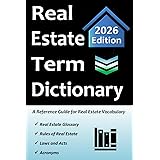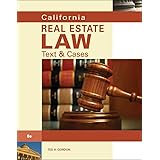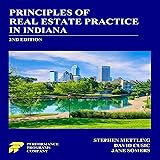Buying real estate with no money down is entirely possible. This insightful video, presented above, challenges common beliefs about property acquisition. It demonstrates that significant capital is not always required to start or expand real estate investments. Instead, leverage and smart strategies are often used. Opportunities are available for those who understand these principles.
Understanding “No Money Down” Real Estate
The concept of “no money down” is often misunderstood. It rarely means zero cash is involved at all. Instead, it signifies that personal funds are not exclusively used. A small amount of one’s own money might be utilized. More commonly, other people’s money (OPM) is strategically employed. This approach shifts the focus from personal savings. It emphasizes finding valuable assets and creative funding solutions.
1. Leveraging Other People’s Money (OPM)
OPM is central to buying real estate with no money. This capital can come from various sources. Each source offers distinct advantages. Understanding these options broadens investment possibilities.
- **Personal Retirement Accounts:** Funds from an IRA or 401k can be accessed. These can serve as short-term capital for a down payment. The money is then repaid as the property generates income. This method allows personal wealth to be put to work.
- **Friends and Family:** Relatives and acquaintances may lend money. This often occurs under favorable terms. Clear agreements are essential for these arrangements. Trust and communication are key elements.
- **Credit Cards and Business Funds:** Credit cards can provide quick access to smaller amounts. Business capital can also be deployed. These are typically used for temporary financing. They are repaid once a long-term loan is secured.
- **Institutional Lenders (Banks, Fannie Mae, Freddie Mac):** This is a primary source of OPM. Loans are often secured against the property itself. Multifamily properties are especially attractive to these lenders. Their value is based on income potential, not just personal credit.
2. The Deal Itself is Paramount
A strong real estate deal attracts financing. Money follows well-structured opportunities. It is said that the most important step is finding the right property. A profitable deal can always find its down payment. Focus should be placed on property valuation and potential returns. The strength of the asset dictates its fundability.
3. Capitalizing on Market Corrections
Major economic shifts present unique chances. Periods of real estate correction create buying opportunities. Sellers become more motivated during downturns. Properties can be acquired at significant discounts. The late 1990s saw 600 bank failures in America. This created an environment for acquiring undervalued assets. Today’s market may offer similar prospects. Smart investors watch for these cycles.
Real-World Examples of “No Money Down” Success
The speaker’s own journey illustrates these strategies. His experiences provide concrete evidence. They show how these principles are applied effectively.
4. First Property Purchase: Minimal Personal Outlay
An early deal involved a $78,000 asset. Only $3,500 was put down. This amount was considered almost no money. The property began cashflowing immediately. This first venture proved the power of leveraging. It showed income generation from day one.
5. Second Property: Zero Personal Investment
A second house was purchased for $92,500. Absolutely no personal money was invested. This property was later sold for $125,000. A profit of $30,000 was realized. This demonstrated the potential for significant returns. All this was achieved without direct capital contribution.
6. The $1.9 Million Multifamily Acquisition
A substantial deal involved a $1.9 million multifamily property. The previous owner had invested $5.1 million in its construction. A down payment of $350,000 was required. This capital was sourced entirely from OPM. Funds came from a retirement account, family members, credit cards, and a business. The property, known as Cedarwoods LLC, is reportedly worth $20 million today. This deal underscores the power of creative financing. It highlights the vast potential of strategic debt.
The Critical Role of Cash Flow in Real Estate
Cash flow is the lifeblood of real estate investing. It determines loan eligibility. Banks assess a property’s income potential. They want to ensure the loan can be serviced. Consistent cash flow secures financing. It also enables repayment of borrowed capital. The $1.9 million deal generated a 12% cash flow on the $350,000 down payment. This amounted to approximately $42,000 annually. This income was used to repay borrowed funds. The retirement account, family, and business were paid back. This was completed within 37 months. Cash flow transforms debt into an asset. It allows for sustainable investment growth.
7. Multifamily Properties Attract Lenders
Multifamily assets are highly favored by banks. Loans are often based on the property’s income. Personal credit scores become less significant. This allows investors to scale faster. Agencies like Fannie Mae and Freddie Mac specialize in these loans. They provide a vital source of financing. This enables large-scale acquisitions. The property itself serves as collateral. Its ability to generate income is key.
8. Scaling Investments Through Strategic Reinvestment
Profits from successful deals are often reinvested. This creates a compounding effect. The $3.2 million profit from the multifamily deal was transferred. It was moved to another property through a 1031 exchange. This strategy defers capital gains taxes. It facilitates continuous growth. The investor can accumulate billions in real estate assets. This is achieved by continually leveraging OPM. It shows how buying real estate with no money can lead to immense wealth.









